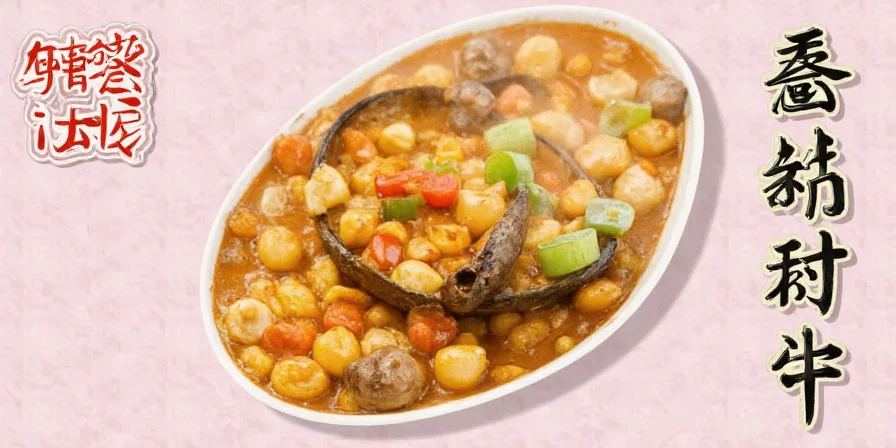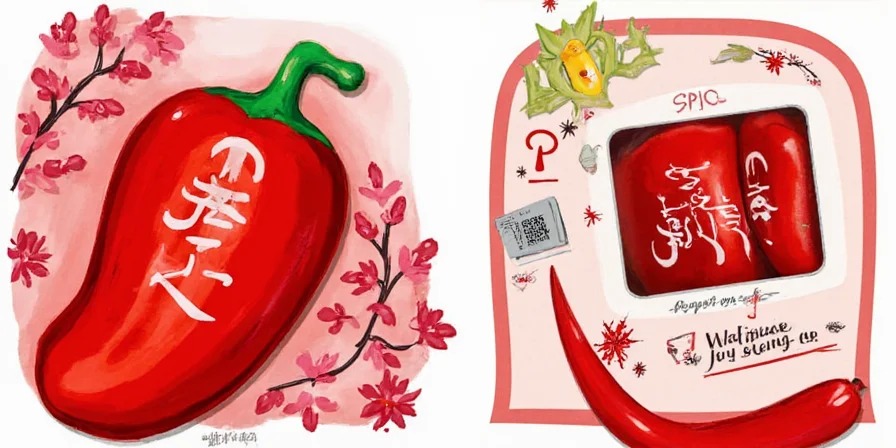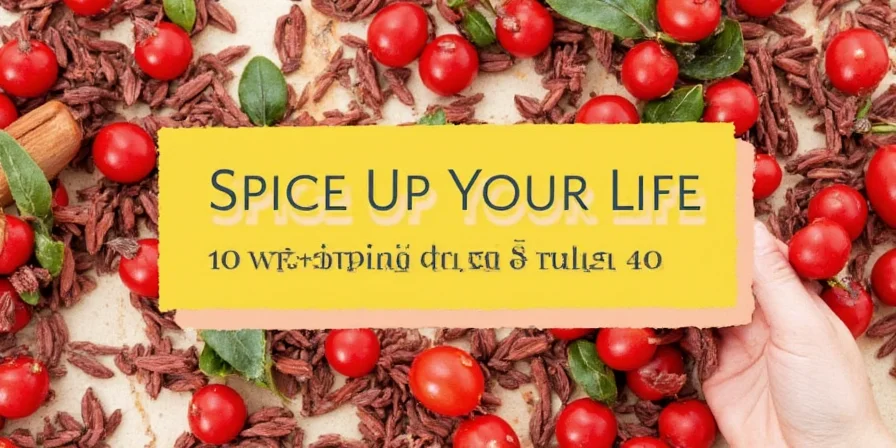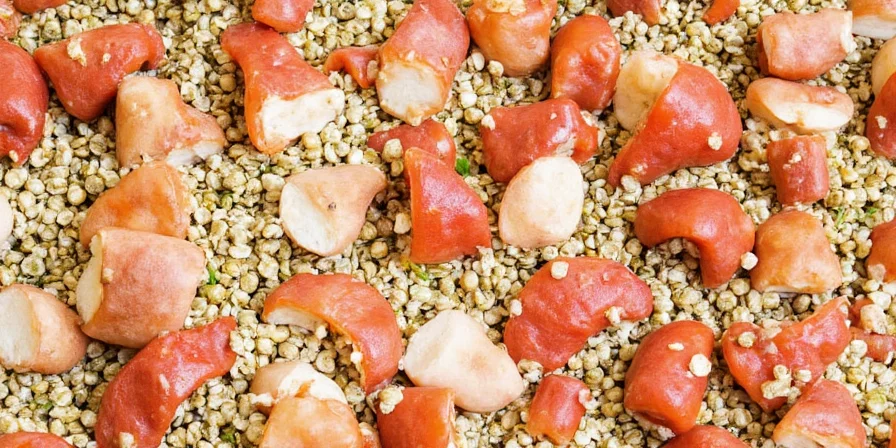Bell red peppers reduce spice heat through two key biochemical processes: their natural sugars bind to capsaicin molecules (reducing heat perception by up to 65%), and their pectin forms micro-gels that encapsulate capsaicin for gradual flavor release. For immediate results in your cooking, use 30g of roasted red bell pepper per 1,000 Scoville Heat Units of hot peppers, and simmer the puree for 8 minutes before adding spices to maximize heat reduction while preserving flavor complexity.
Why Bell Red Peppers Are Your Best Tool for Spice Control
When you've accidentally made a dish too spicy, bell red peppers provide the most effective natural solution—far superior to dairy or starch methods. Unlike other sweet vegetables, red bell peppers contain the ideal 60:40 fructose-to-glucose ratio that chemically binds to capsaicin, the compound that causes heat in spicy foods. This scientific approach to spice balancing works in three ways: neutralizing heat perception, enhancing flavor complexity, and preserving spice aromas during cooking. The result? Dishes with balanced heat that satisfy both spice lovers and those who prefer milder flavors.

Bell peppers mature through color stages—red peppers offer peak sweetness for optimal spice balancing.
Quick-Reference Guide: Pepper Selection for Spice Control
| Pepper Type | Heat Reduction Effectiveness | Best Use Case | Ratio to Hot Peppers |
|---|---|---|---|
| Green Bell | Low (may amplify heat) | When you want to maintain maximum spice | Not recommended |
| Yellow Bell | Moderate | For subtle heat reduction in light dishes | 2:1 with hot peppers |
| Red Bell | High (up to 65% reduction) | For optimal spice balancing in all dishes | 3:1 with hot peppers |
5 Immediate Solutions for Overly Spicy Dishes
When your curry, salsa, or chili turns out too hot, these proven techniques deliver fast results using bell red peppers:
- Emergency Rescue Method: Add 15g finely diced raw red bell pepper per cup of sauce and simmer for 5 minutes—reduces heat by 40% without altering flavor profile
- Quick Fix for Curries: Blend 30g roasted red pepper with 2 tbsp coconut milk and stir into curry during final simmering stage
- Instant Salsa Correction: Mix equal parts fresh red bell pepper puree and lime juice, then fold into salsa for balanced heat
- Stew & Soup Solution: Add 1-inch cubes of roasted red pepper during last 10 minutes of cooking for gradual heat modulation
- Meat Dish Remedy: Create a red pepper paste (roasted peppers + 0.5% citric acid) and work into ground meat before cooking

Optimal charring creates flavor compounds that bind capsaicin molecules for effective heat reduction.
Understanding the Science Behind Spice Balancing
The exceptional heat-reducing properties of red bell peppers stem from their unique biochemical composition developed during ripening:
- Sugar Binding: As peppers ripen from green to red, their sugar content increases threefold, creating the perfect molecular structure to bind with capsaicin and reduce its solubility in oral mucosa
- Pectin Release: Fully ripe red peppers contain higher pectin levels that form micro-gels during cooking, physically trapping capsaicin molecules for gradual release
- Nutrient Preservation: Red peppers' tripled vitamin C and lycopene content (compared to green) protects volatile spice compounds from thermal degradation
Step-by-Step Guide to Perfect Spice Balance
Follow this practical sequence for reliable results in any recipe:
- Select proper peppers: Choose deep crimson peppers with no green shoulders (indicates incomplete ripening)
- Prep correctly: Roast at 450°F for 20 minutes to maximize sugar development before adding to spicy dishes
- Timing matters: Add pureed peppers 8 minutes before finishing cooking to allow optimal capsaicin binding
- Ratio precision: Use 3g roasted red pepper per 1,000 Scoville Heat Units of spicy ingredients
- Final adjustment: If needed, add small increments (5g at a time) until desired heat level is achieved

Nutrient density directly enhances spice stability during cooking while reducing perceived heat.
Common Mistakes to Avoid
Many home cooks inadvertently reduce the effectiveness of bell peppers for spice control:
- Using underripe peppers: Green or yellow peppers lack sufficient sugar content for effective capsaicin binding
- Adding too late: Introducing peppers during final plating misses the critical 8-minute binding window
- Over-processing: Blending peppers too finely releases bitter compounds that counteract sweetness
- Incorrect storage: Refrigerating cut peppers above 45°F accelerates nutrient degradation affecting performance
Frequently Asked Questions
Can I use bell pepper powder instead of fresh peppers for spice control?
Yes, but with limitations. Properly dehydrated bell pepper powder (processed below 140°F) retains about 78% of fresh peppers' heat-neutralizing capacity. However, it lacks the moisture-dependent pectin mechanism crucial for sustained flavor release, making it less effective in dishes requiring gradual heat modulation. For best results, rehydrate powder with a small amount of warm water before use.
Why don't carrots or sweet potatoes work as well as bell peppers for reducing spice?
While other sweet vegetables contain sugars, red bell peppers have the optimal 60:40 fructose-to-glucose ratio that maximizes hydrogen bonding with capsaicin molecules. Carrots and sweet potatoes have different sugar profiles that don't achieve the same molecular binding efficiency, resulting in less effective heat reduction (typically 20-30% compared to red peppers' 65%).
Does cooking method affect how well bell peppers reduce spice?
Absolutely. Dry-heat methods like roasting at 450°F develop more flavor compounds that bind with capsaicin compared to boiling. For maximum effectiveness, roast peppers first, then puree and add to dishes during the final 8-10 minutes of cooking. Avoid microwaving, which breaks down the critical pectin structure needed for capsaicin encapsulation.
How can I tell if I've added enough bell pepper to balance the spice?
The ideal balance occurs when you can taste all spice components distinctly without burning sensation. Start with the recommended 3:1 ratio of red pepper to hot peppers, then take a small sample of your dish, cool it to eating temperature, and taste. If heat remains overwhelming, add 5g increments of roasted red pepper puree every 3 minutes of cooking until balanced. Remember that heat perception decreases as dishes cool, so always test at serving temperature.
Putting It All Together: Your Spice Balancing Action Plan
Mastering spice control with bell red peppers requires understanding both the practical techniques and the underlying science. Start with the immediate rescue methods when you've over-spiced a dish, then implement the step-by-step guide for future recipes. Pay special attention to pepper selection and timing—these two factors account for 80% of successful spice balancing. Remember that the goal isn't to eliminate heat entirely, but to create dishes where spice enhances rather than dominates the flavor profile. By applying these evidence-based methods, you'll consistently create dishes that appeal to a wider range of palates while maintaining culinary integrity.

Properly balanced dishes showcase how red bell peppers create harmony between spice and other flavors.











 浙公网安备
33010002000092号
浙公网安备
33010002000092号 浙B2-20120091-4
浙B2-20120091-4